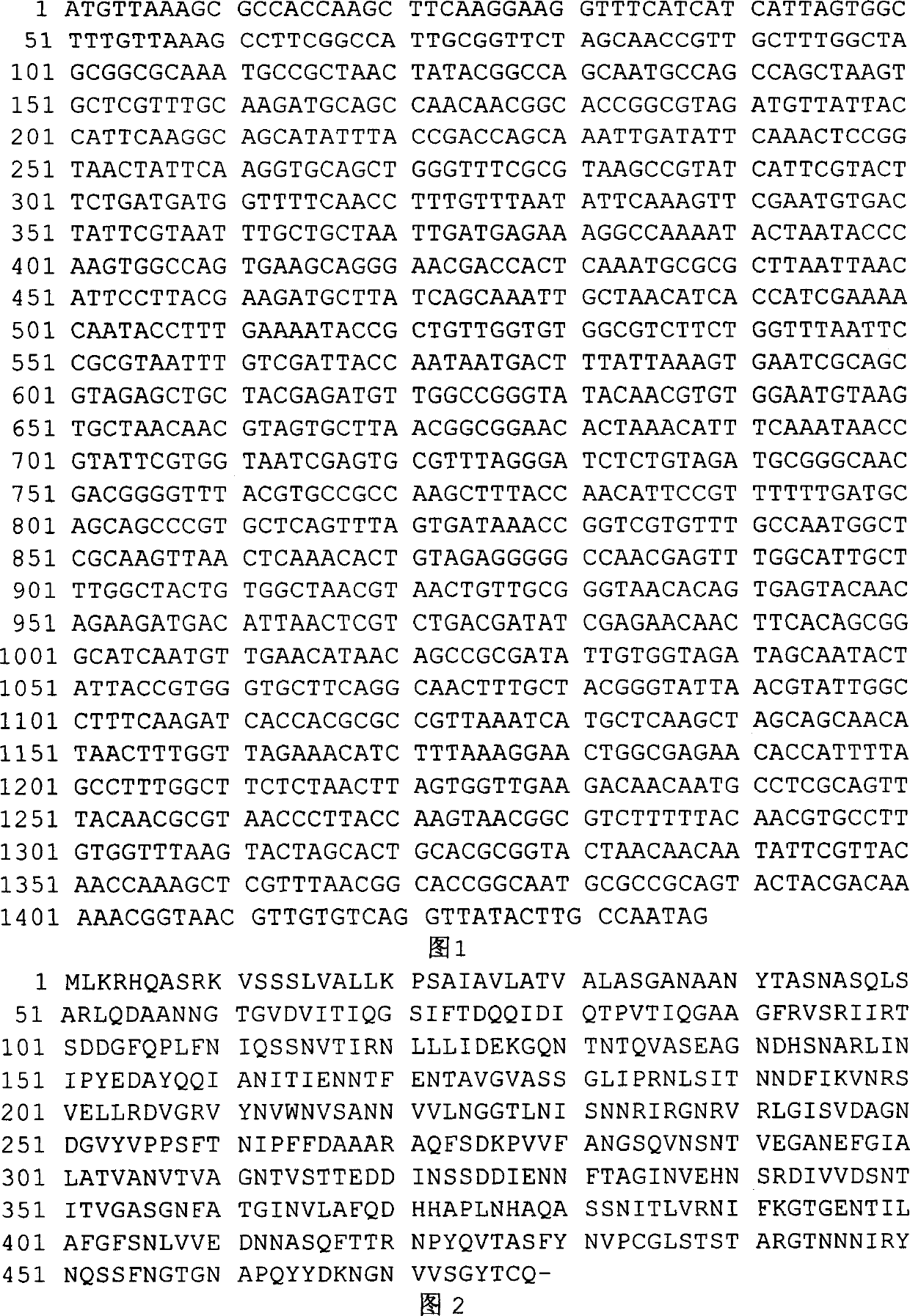Beta-agaropectionase gene aga B, its preparation method and application
A technology of agarase and pet24-agab, which is applied in the direction of biochemical equipment and methods, enzymes, and the use of vectors to introduce foreign genetic materials, can solve the problems of severe reaction conditions, poor specificity, and unsatisfactory production and scientific research, and achieve The effect of high expression level, low cost and easy purification
- Summary
- Abstract
- Description
- Claims
- Application Information
AI Technical Summary
Problems solved by technology
Method used
Image
Examples
Embodiment 1
[0017] The β-agarase gene agaB of Pseudomonas CY24 was cloned by the shotgun method, and the specific operation was to screen the agarase gene agaB from the Pseudomonas genome library constructed in our laboratory using agar as the only carbon source. Cloning and sequencing of agar activity. Using the biological software Primer 5.0 to analyze the reading frame and the appropriate restriction site, the reading frame was digested and subcloned respectively, and the active target clone was screened on the agar plate. Design upstream primers (5'-CATATGTTAAAGCGCCACCAAGC-3') and downstream primers (5'-CTCGAGTTGGCAAGTATAACCT-3') according to the sequencing results, and use genomic DNA as a template to carry out PCR reactions. The PCR reaction composition is as follows (10 μl reaction system): 0.8 μl dNTP, 1 μl 10×PCR buffer, 0.05 μl (5 U / μl) Taq enzyme, 1 μl DNA template, 0.1 μl each of upstream and downstream primers. The reaction conditions are: pre-denaturation at 94°C for 2 minu...
Embodiment 2
[0018] Connection of β-agarase agaB gene and carrier pBS-T, 20 μl reaction system: pBS-T 0.5 μl, PCR product 10 μl obtained in Example 1, T 4 DNA ligase 1.0 μl, 10×T 4 DNA ligase buffer 2.0 μl, ddH 2 O 6.5 μl of the connection liquid obtained by connecting overnight at 16°C can obtain the E. coli cloning vector pBS-agaB, which is used to transform E. coli DH5α. Example 3: Construction of Escherichia coli recombinant strain DH5α-pBS-agaB
Embodiment 3
[0019] Add 100 μl of thawed competent E.coli DH5α and 10 μl of the connection solution obtained in Example 2 to a 1.5 ml Eppendorf tube, ice-bath for 30 min, 42 °C for 90 seconds, ice-bath for 3 min, add 900 μl of LB medium, and shake at 37 °C for 1 hour. The bacterial liquid was mixed with 4 μl IPTG and 40 μl X-gal, spread on the LB plate containing 50 μg / ml ampicillin, and cultured overnight at 37°C. Pick a single white colony for PCR detection, and the one showing a 1.4kb specific band in agarose gel electrophoresis is a positive transformed colony, that is, Escherichia coli DH5α-pBS-agaB containing pBS-agaB. The plasmid was extracted from DH5α-pBS-agaB by alkaline lysis method, and the nucleotide sequence of the exogenous insertion sequence agaB was determined with the general sequencing primer of pBluescript II KS(+). Example 4: Construction of Escherichia coli expression vector pET24-agaB
PUM
 Login to View More
Login to View More Abstract
Description
Claims
Application Information
 Login to View More
Login to View More - R&D
- Intellectual Property
- Life Sciences
- Materials
- Tech Scout
- Unparalleled Data Quality
- Higher Quality Content
- 60% Fewer Hallucinations
Browse by: Latest US Patents, China's latest patents, Technical Efficacy Thesaurus, Application Domain, Technology Topic, Popular Technical Reports.
© 2025 PatSnap. All rights reserved.Legal|Privacy policy|Modern Slavery Act Transparency Statement|Sitemap|About US| Contact US: help@patsnap.com

